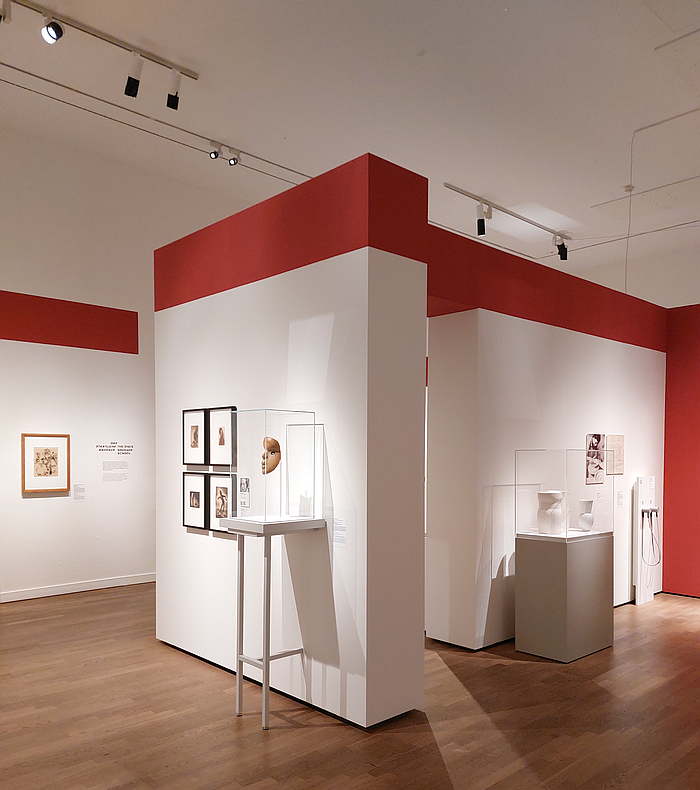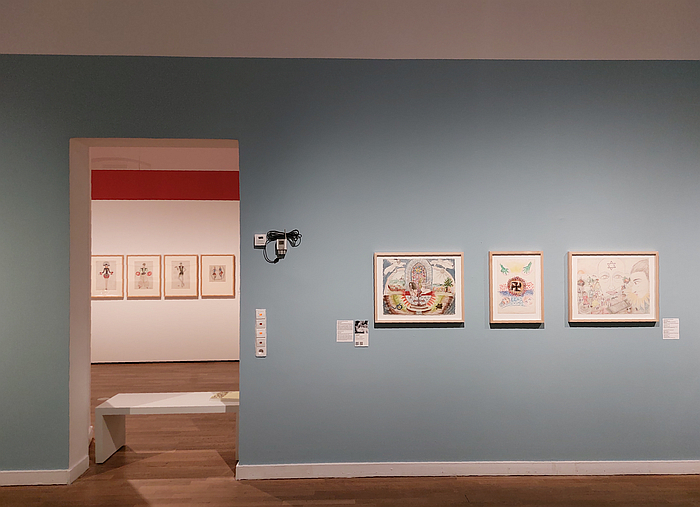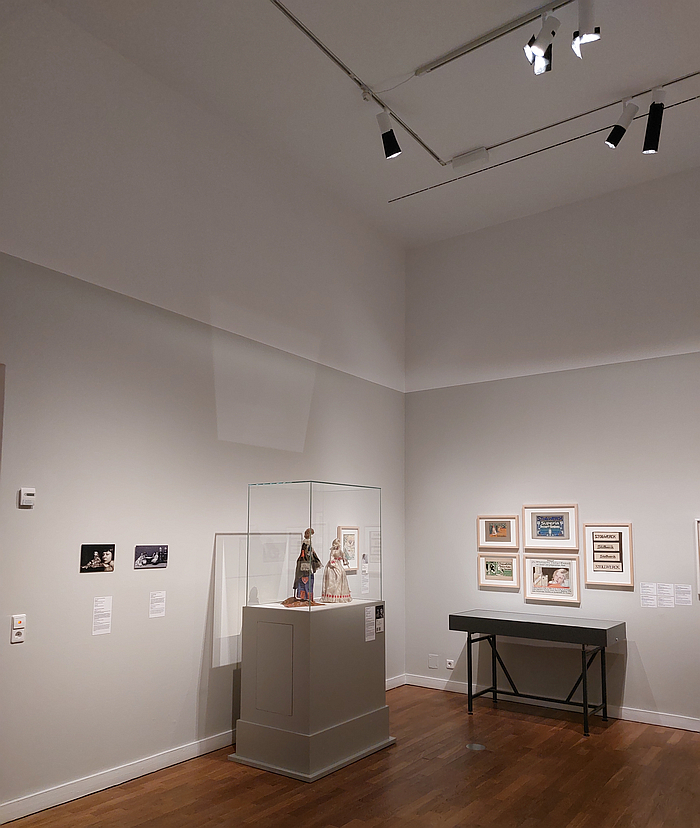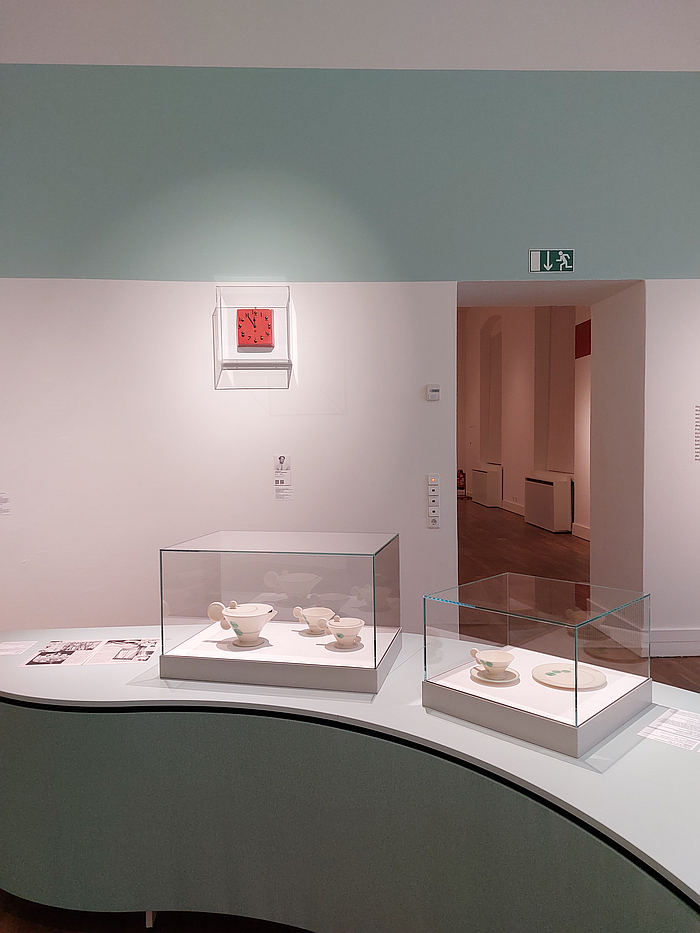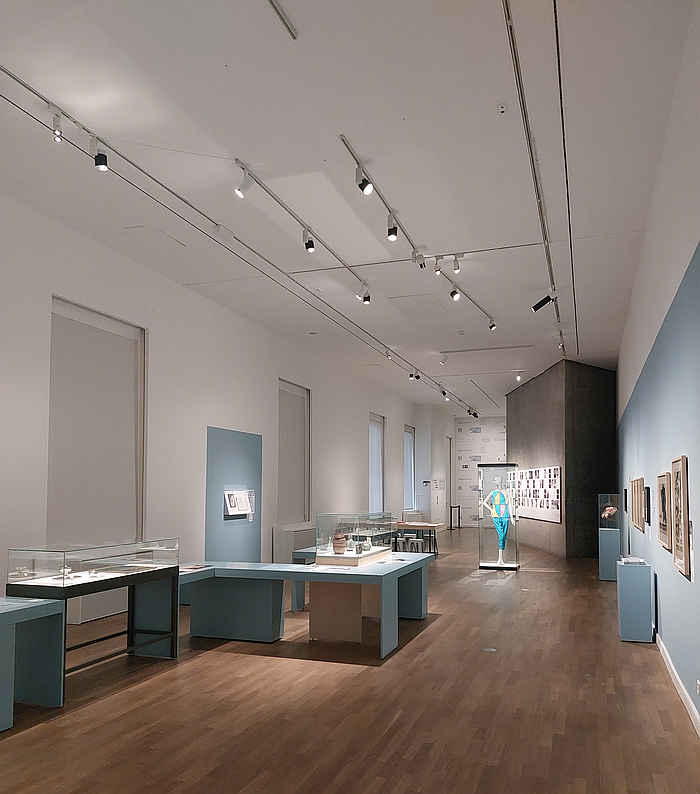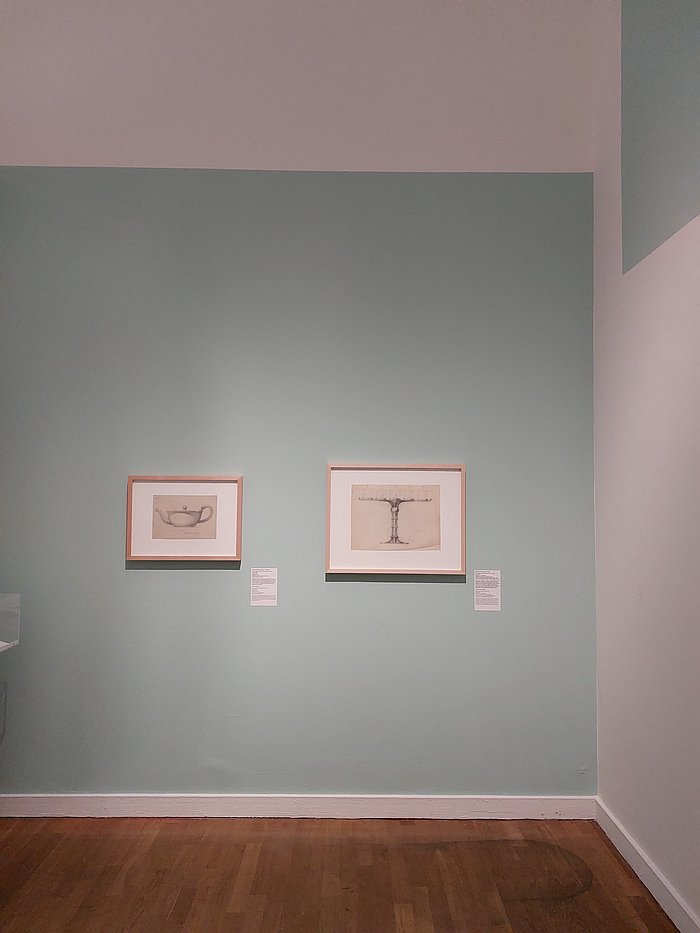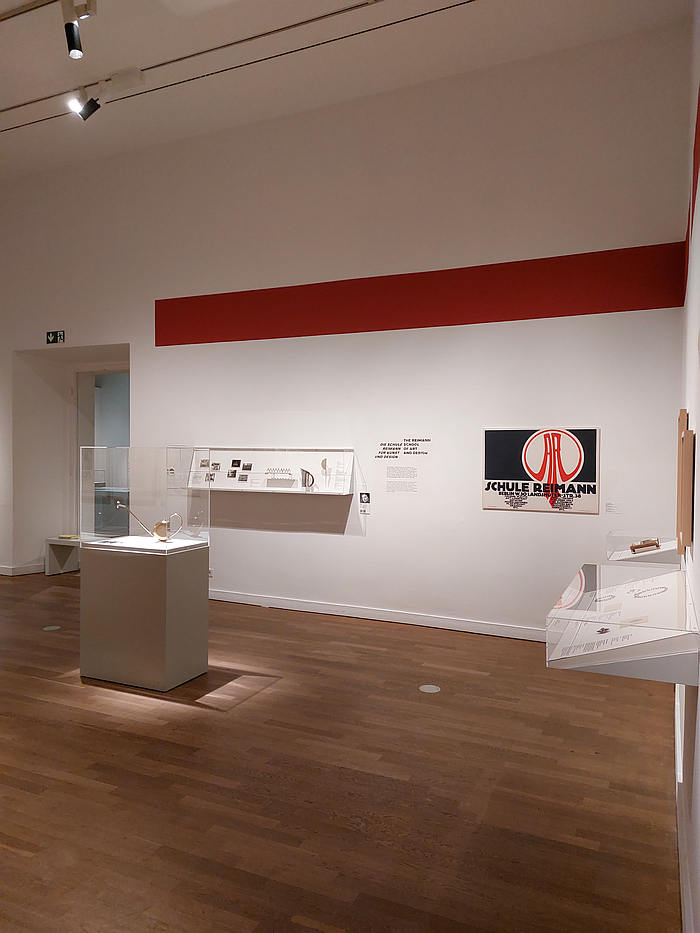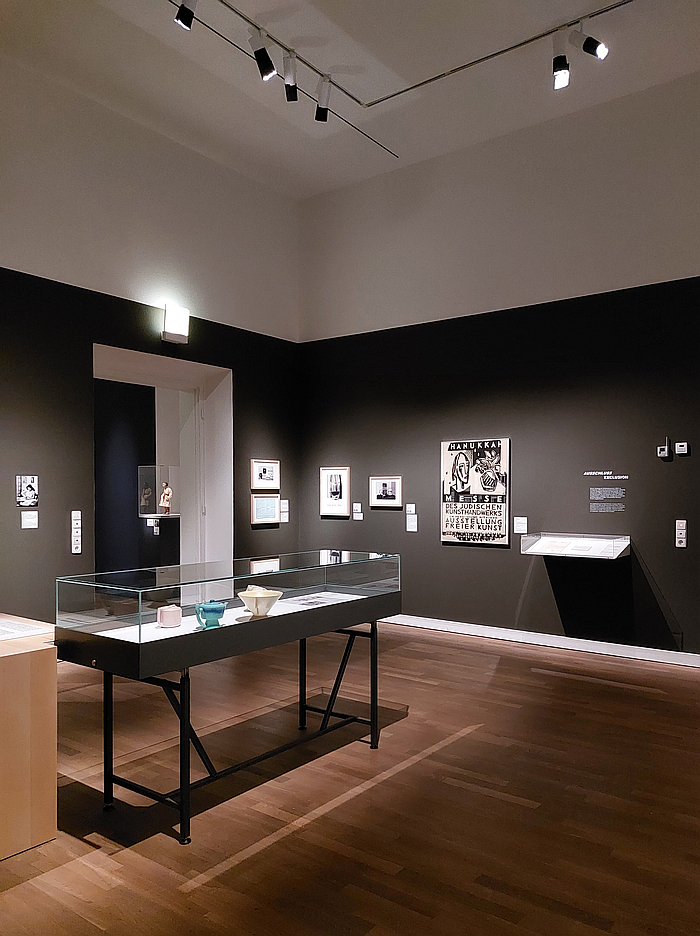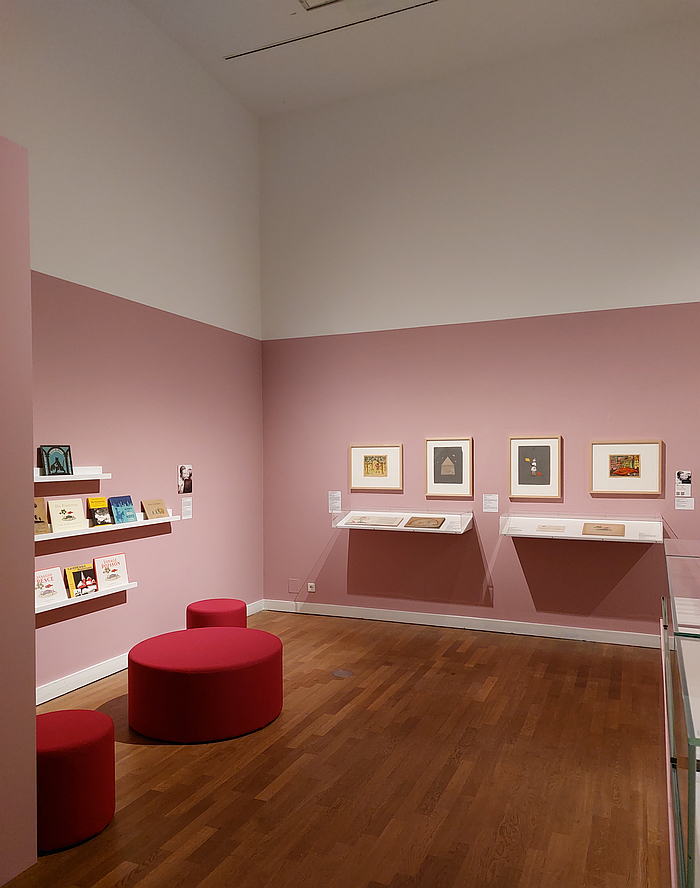As oft opined in these dispatches, the popular narrative of the (hi)story of design in Europe is a very abridged retelling, one contributed to by but a limited number of protagonists, invariably from dominant groups, and viewed from a limited number of perspectives, invariably those perspectives we're all conditioned to view that narrative, and those protagonists, from, with the myriad problems the thereby inherent skews and distortions cause not only for our understandings of the (hi)story and development of design in Europe but the (hi)story and development of Europe. The two being as they are intimately, inextricably, related.
With Defiance. Jewish Women and Design in the Modern Era the Jewish Museum, Berlin, seek to approach alternative perspectives on, and thereby a more probable telling of, that narrative, those narratives, and in doing also enable alternative perspectives on the nature of, the function of, (hi)story of, and importance of, defiance.......
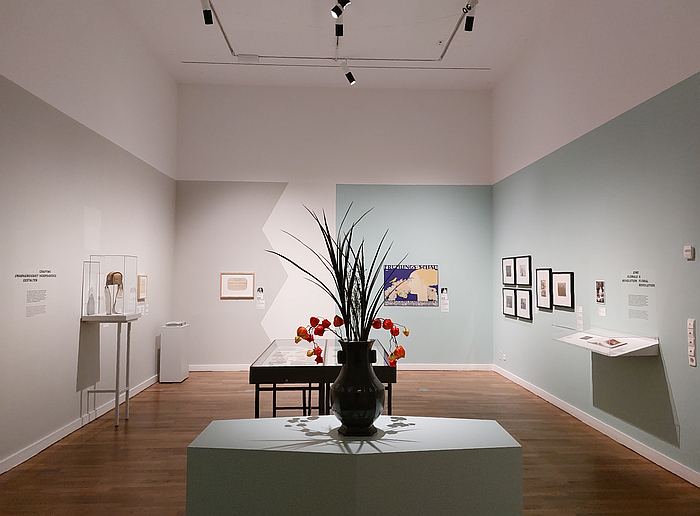
A defiance discussed in the opening chapter of Defiance. Jewish Women and Design in the Modern Era in context of some of the myriad dominions in which females, Jewish and Gentile, were increasingly defying the (male defined) social and civic conventions and orders of European society in the early 20th century, that Modern Era of the title, including, for example, in context of female emancipation, certainly the rocky path there that flows through the early 20th century and whose ambitions are in many regards encapsulated in a 1929 illustration by Dörte Clara Wolff, a.k.a. Dodo, that greets one in the opening chapter in the person of a self-confident young woman self-confidently commanding the scene. Commanding late 1920s society in a manner late 1820s society would have been unable to compute. As arguably were a great many men in 1929.
And also defiance in context of the Fascism that was rising not just in the contemporary Germany of that period that is Defiance's primary focus, but across Europe. A defiance of a Fascism others, a great many, blithely, unquestioningly, accepted, that for all (hi)story has recorded the many active, violent, acts of the period, could also be, was, expressed more subtly and passively.
Something deliciously illustrated in the unassuming context, unexpected context, of a cushion that Dorothea Kuttner, at that time a ca. 20 year old student of the Kunstgewerbeschule Berlin, was instructed to adorn with a Swastika, a reminder of that way, as discussed by and from Design of the Third Reich at Design Museum Den Bosch, ‘s-Hertogenbosch, via an array of inlayed tables, monogrammed radios, cigarette cards, etc that the NSDAP dictatorship never knowingly missed a chance to add their malignant CI to objects of daily use.
A brief at the Kunstgewerbeschule that Kuttner fulfilled, albeit in manner that, as can be enjoyed in Defiance, transforms the Swastika from the toxin it was in the NSDAP's hands to a delicate flower from which hope springs eternal; a very nice example of subversion as an act of defiance, and of a simple everyday act of defiance against the growing everyday of Fascism. And also a nice, and very apposite, reminder of the dangers of authoritarian regimes using symbols, branding, signatures and other CI tools to normalise and entrench their world-view in a society every bit as blithe and unquestioning as it was a century ago. And thus also an urgent reminder of the need to defy, to subvert, such forces. A reminder in the unassuming context, unexpected context, of a cushion.
A rise of Fascism in the early 20th century that, inarguably, primarily in context of the, then, contemporary Germany, was related to the defeat of the German Empire in the 1914-1918 War and the associated knock that caused to the national pride; a national pride that in all its global manifestations is, and long has been, the most dangerous of commodities for the health of humanity. A 1914-1918 War that also features in the opening chapter of Defiance via a brief discussion on the contribution of German Jewish female creatives to supporting the War effort on the Germanic home front, including, for example, a number postcards by Elly Frank presenting pro-War propaganda and/or calls on citizens to support the troops via a variety of non-combat means or via Käthe Spanier's poster Krieg und Küche, War and Food, which provides tips on cooking in a manner that is (more or less) nutritious but doesn't place any unnecessary extra strain on War-time resource provision. And does so with a simple yet effect rhetoric in an equally simple yet effective graphic concept.
1914-1918 War related works that aside from offering rarely offered perspectives on the roles of Jewish Germans in context of supporting the German War effort, also underscore that the early 20th century defiance primarily discussed in Defiance is that in context of creative practice.
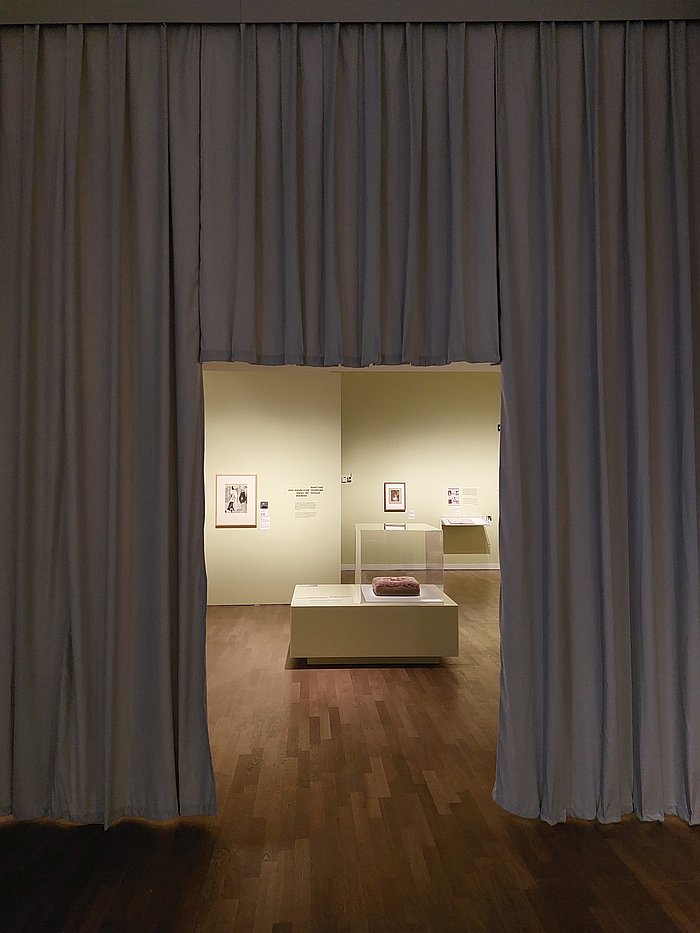
A defiance that in many regards greets one at the entrance to Defiance via a brief introduction to the 1912 Berlin exhibition Die Frau im Haus und Beruf, The Woman in House and Profession, an exhibition organised by the Deutscher Lyceum-Club which, as discussed in context of Berlin's own Lilly Reich, was an important moment by and for female creatives, both utilitarian and decorative, but for all utilitarian, staged as it was at a time when the still relatively fledgling practice of design, a practice that in the very first years of the 20th century was (briefly) something essentially genderless, one thinks, for example, of a Margarete Junge or a Gertrud Kleinhempel establishing themselves in early 20th century Dresden as important, respected, regarded, furniture designers, or a Lilly Reich making a name for herself in the first years of the 20th century as an interior, furniture and exhibition designer, was rapidly becoming something inherently male, like what architecture was. As neatly illustrated by that way with time the independent creative Lilly Reich became but an assistant to, a muse to, Ludwig Mies van der Rohe.
Thus a period in the Modern Era when female visibility was of utmost importance, and when defiance on the part of female creatives was very much demanded; when fight, tenacity and defiance were demanded of females seeking to establish themselves as creatives.
A need for fight, tenacity and defiance by female creatives against an increasing male domination of the practice of design in the course of the first decades of the 20th century perhaps most popularly elucidated by the realities of the Bauhauses Weimar and Dessau where outwith the Weaving Workshop, or the Book-binding Workshop when it existed, females were a rarity. A limitation on the fields of practice of female creatives that a couple of decades previous, and that to those viewing Die Frau im Haus und Beruf, would have been considered a retrograde conservative reaction, not the future-focussed avant-garde Bauhaus is held up as embodying today.
Thoughts on Bauhaus to take with you into the chapter Design Education, a chapter which in addition to briefly exploring traditional craft training in an age of increasing industrialisation, specifically via the careers of the goldsmiths Annie Rosenblüth and Paula Straus, also, and as the law prescribes in context of discussions on creative education in the early 20th century, includes the Bauhauses, albeit not through the Weaving Workshop via which female creativity at the Bauhauses is normally viewed. Or at least not the Weaving Workshop alone, it is however very much present through the person of Anni Albers, including via a textile woven by Albers on the basis of a design by Günta Stölzl that also prominently features in Textile Manifestos – From Bauhaus to Soft Sculpture at the Museum für Gestaltung, Zürich; a Stölzl and Albers who, in their own ways are not only, as we opined from Zürich, very much to be located at the centre of textile practice in the 1920s and 30s, but who also in their own ways represent an unyielding defiance to the restrictions of the periods of their active careers.
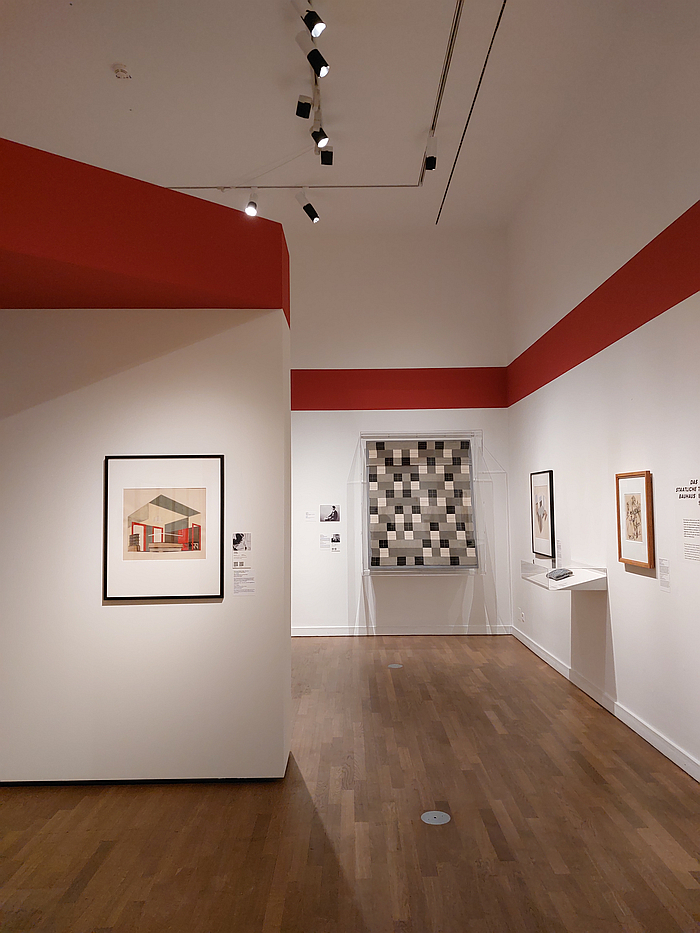
But Bauhauses also discussed via the pottery of a Marguerite Friedlaender-Wildenhain who, after studying and working in the Bauhaus Cermaics Workshop in Dornburg between 1919 and 1925 moved to Burg Giebischestein, Halle, rather than follow Bauhaus to Dessau, a Burg Halle where in 1926 she qualified as a Meisterin, and who is represented in Defiance by, amongst other objects, examples of her cooperations in the late 1920s/early 1930s with KPM Berlin; via the puppets and masks of a Marianne Heymann, including a puppet of Paul Klee that caused us to reflect on Klee's 1922 work Löwen, man beachte sie!, Lions, be on your guard, as last seen in context of Bauhaus and National Socialism at Klassik Stiftung Weimar, a work we adore, that counts amongst our all time favourite art works, but that we can't seriously accept an actual human adult Paul Klee created. That a puppet Paul Klee painted it however makes perfect sense.
And via the architecture and interior design of Friedl Dicker. An introduction to Dicker in Defiance that also includes her design for the invitation to the first Bauhausabend, Bauhaus Evening, those, essentially, Bauhaus Salons, that, as discussed in context of the Radio smow Bauhaus Playlist, were an attempt to move Bauhaus outwith the ateliers and seminar rooms of the Weimar school building and into contemporaneous Weimar, to make Bauhaus a component of wider cultural life in Weimar.
An attempt that didn't really work. Failed miserably.
And that inarguably not least on account of the invited guests, including the avant-garde poet/performance artist Else Lasker-Schüler, the guest at that first Bauhausabend in April 1920. A Lasker-Schüler who for all that speaks in her favour was never going to please the adherents of the Weimar Klassik of Goethe, Schiller et al who were such fierce opponents of the Weimar Modern of Bauhaus, and thus a reminder, as discussed in context of Mathilde von Freytag-Loringhoven. Painter, Author, Animal Psychologist and Bauhaus Critic at the Stadtmuseum Weimar, of the massive, insurmountable, gulf that existed in early 1920s Weimar between the protagonists of Weimar Modern and the adherents of Weimar Klassik. Despite the fact that in many regards they were one and the same. Just a couple of generations apart. And a Bauhausabend with Else Lasker-Schüler in April 1920 that, as previously noted, has also gone down in (hi)story for the conflict that developed in the course of the evening between "Jewish" and "Germanic" Bauhäusler, a reminder that the tensions of 1920s Weimar were also daily components of life at 1920s Bauhaus Weimar.
That the Bauhauses weren't the defiance to Fascism they are often held up as. Which brings us back to Bauhaus and National Socialism at Klassik Stiftung Weimar.
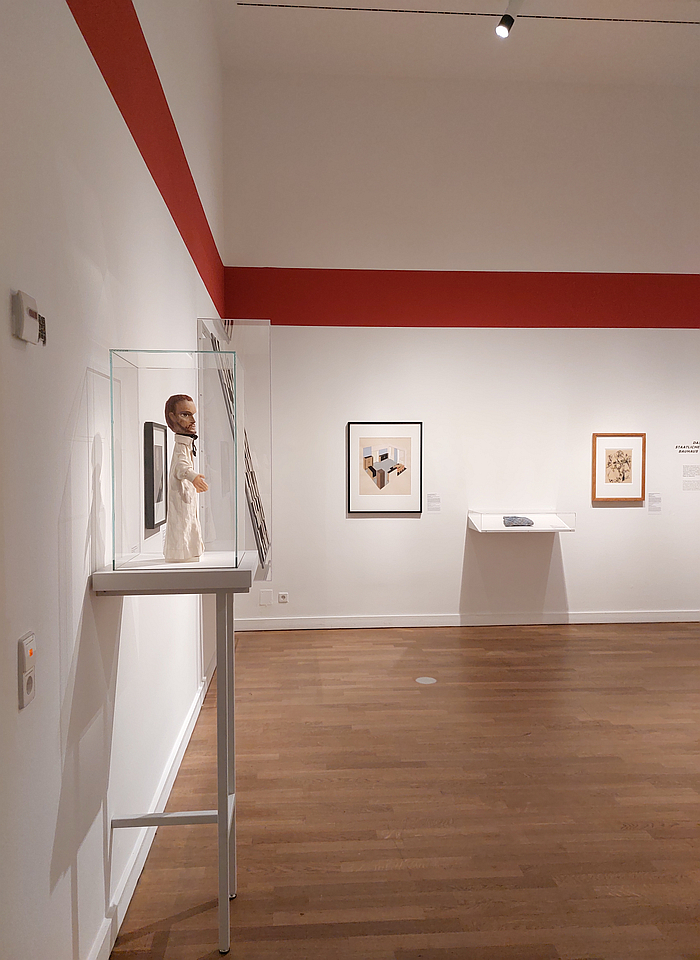
Beyond the Bauhauses Design Education doesn't discuss the female only Loheland school/community in Fulda, which may or may not be interesting and relevant in context of the wider themes of Defiance, and also in context of relationships between esotericism and Fascism, see also the Mazdaznan influence at Bauhaus Weimar, but does discuss the Reimann School in Berlin, and institution established in the early 20th century by the cabinet maker and producer Albert Reimann that, as previously noted, was not only from the very beginning freely open to female students, thus stands very much in context of the openness to females in creative practice of those years before design became self-evidently male, but that was also an early protagonist of and advocate for the workshop principle in creative education that in the course of the 1920s would become standard practice and so important in the shift from artisan to industrial production. And a Reimann School that arose to become, arguably, the largest private creative school in the Germany of the late 1920s before in the mid-1930s Albert Reimann was obliged, on account of his Jewish ancestry, to sell the school. And at which point, arguably, it became invisible in the (hi)story of creative education in Modern Era Germany.
A Reimann School whose alumni includes the aforementioned Dodo whose ca. 1926 clothing designs presented in Defiance remind in aspects of the works by a Xanti Schawinsky at Bauhauses Weimar and Dessau as seen at Play, Life, Illusion. Xanti Schawinsky at Kunsthalle Bielefeld, and thus help reinforce that in the 1920s fantastical costumes weren't just developed at the Bauhauses. And thus of the real necessity to look beyond the Bauhauses when assessing creative education in the 1920s.
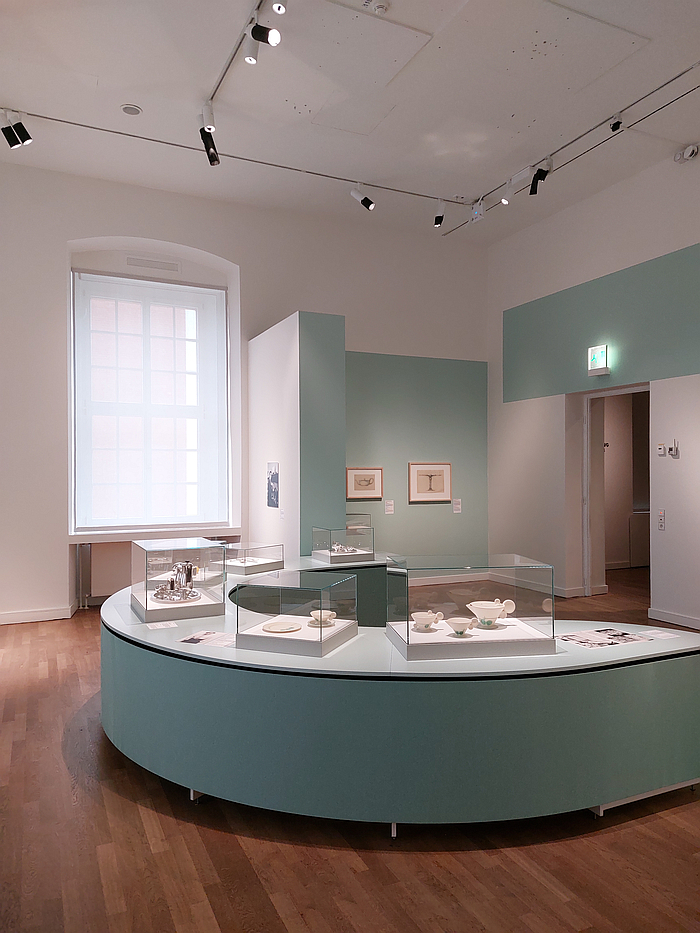
If receiving an appropriate creative eduction was often a complicated act, and an act of active defiance, for females in 1920s and 30s Germany, making a living and building a career from that education was every bit as hard. But every bit as possible for those who persevered and fought their corner. And thus involved just as much, and was just as much an act of, defiance.
An argument made, an appreciation approached, in the subsequent chapters of Defiance through introductions to and works by, for example, clothing designers such as, and amongst others, Regina Friedlaender, Johanna Marbach or Paula Schwarz; the goldsmith and silversmith Emmy Roth who so nearly, potentially, won the non-existent 1923 Grassimesse smow-Designpreis and who from ca. 1906 had her own atelier in Berlin Charlottenberg; or Margarete Heymann-Loebenstein, that ceramicist who, as discussed by and from Haël. Margarete Heymann-Loebenstein and her workshops for decorative ceramics 1923-1934 at the Bröhan Museum, Berlin, not only established her own, successful, business in Marwitz, to the north of Berlin, but who from there helped advance positions on and appreciations of ceramics in the 1920s and 30s. And who in her work predicted the rise of both Art Deco and the questioning of the tenets of 1920s and 30s Functionalist Modernism in the 1960s and 70s via a reinterpretation and re-contextualisation of both those tenets and the formal rules of those tenets.
And also discussed, approached and argued in the chapter The Jewish Playroom that introduces works by female Jewish German creatives that exist in context of both the novel pedagogic and child rearing positions of the 1920s and 30s, and also, as the curators argue, of an increasing move towards an active fostering of an appreciation of Jewish identity within children of German Jewish families. Works that alongside toy and game designs by the likes of Rosa Freudenthal or the aforementioned goldsmith Annie Rosenblüth, also includes examples of children's book illustrations by Tom Seidmann-Freud complete with a small reading corner, for visitors big and small alike, featuring books for children, big and small alike, in a variety of languages and illustrated not just by Seidmann-Freud but also by the likes of Käthe Wolff or Marte Landsberger.
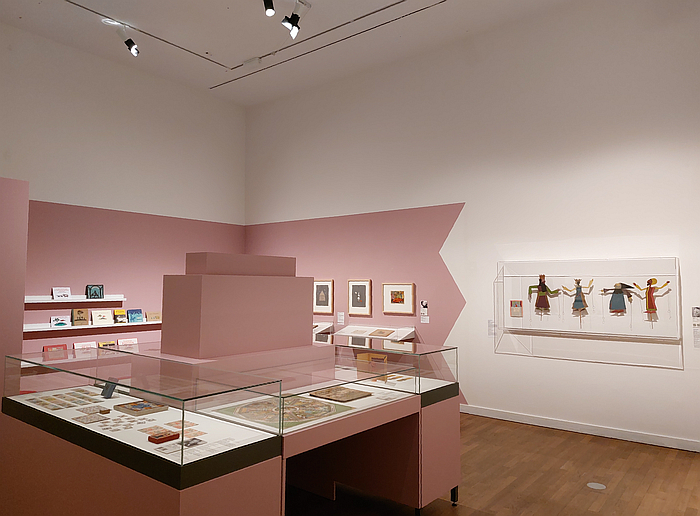
Introducing creatives representative of a wide range of approaches and positions, active in an equally wide range of creative genres, wide ranges indicative of the vibrant creative environment of the early 20th century Germany of its primary temporal focus, Defiance features not just works by the selected creatives but also a QR code for each creative that links to a bilingual German/English biography.
A biography that often runs "Born in: [year], [town]", "Died in: [year], [town]" but alternatively often runs "Born in: [year], [town]", "Murdered in: [year], Auschwitz, Theresienstadt, Riga, etc"
Thus biographies that remind that what is being discussed isn't simply the (hi)story of creativity in 20th century Europe as explored through the featured creatives, but the (hi)story of 20th century Europe.
A reminder poetically reinforced by the exhibition design in the segue from the innocence, possibility, freedom, colour of The Jewish Playroom into the cold, darkness of the chapter Restriction, Marginalization, Upheaval. A chapter with which Defiance takes its narrative into 1933.
A chapter that in addition to discussing the restriction, marginalization, upheaval for Jewish creatives in Germany following the NSDAP's Machtergreifung, not least in context of the practical considerations of state sponsored bans on practising their professions or of owning business, including, for example, making note of Margarete Heymann-Loebenstein's banishing from her factory in Marwitz, and the pittance she received for her lifetime's work, a fate reinforced by the presentation in Defiance of the infamous May 1935 article "Jüdische Keramik in der Schrekenskammer", "Jewish Ceramics in the Chamber of Horrors" in the propaganda sheet Der Angriff with its outpouring of antisemitic bile and xenophobic hate, is a chapter that also, primarily, focuses on the defiance to those restrictions, marginalizations, upheavals; on how Jewish creatives sought to organise and protect themselves, their community, their culture and their creativity.
Including via a presentation of puppets by Maria Luiko created in the mid-1930s to enable the performing of a number of works that celebrate and reinforce Jewish faith and culture, and also making note of events organised by the Kulturbund deutscher Juden including a decorative and utilitarian art sales exhibition held in Berlin in 1934 whose list of male and female exhibitors, the greater many of whom don't feature in Defiance, and aren't among those names the poplar narrative of design (hi)story has remembered, helps reinforce the sheer number of creatives of Jewish ancestry who were active in the Germany of the 1920s and 30, who contributed to the development of creativity in the 1920s and 30s. And who defied the restrictions, marginalizations, upheavals of the NSDAP.
If defiance that, as (hi)story records, was brutally, inhumanely, cut down.
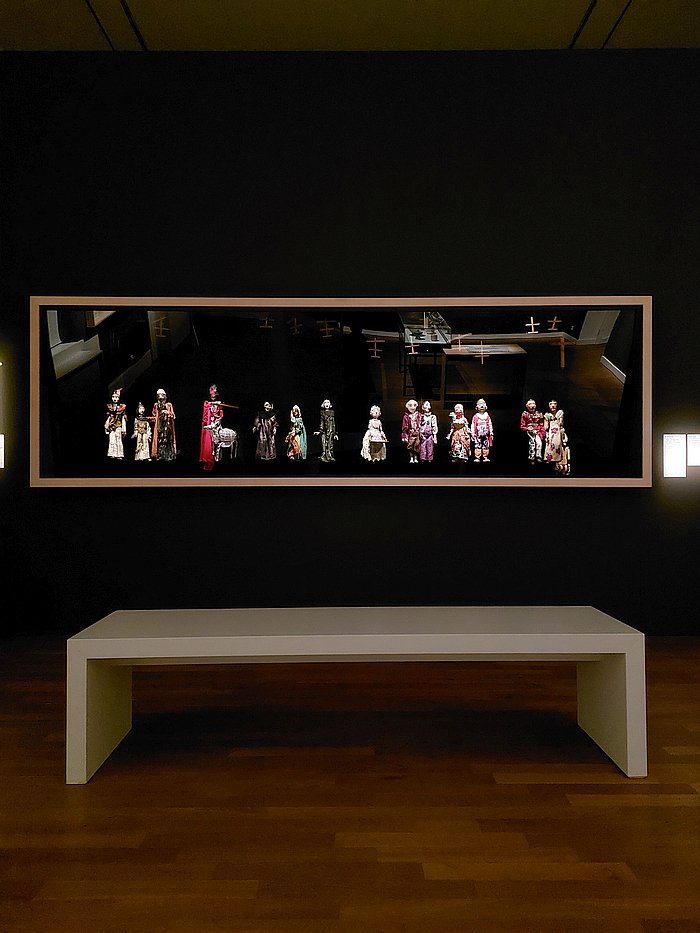
A reality symbolically reflected in the long corridor, that leads out of Restriction, Marginalization, Upheaval. A relatively dark, unwelcoming, confined, confining space that in being such awakens memories of the myriad dark, confined confining spaces Jewish families across central Europe hid in to avoid the NSDAP as discussed in and by Natalia Romik. Hideouts. Architecture of Survival at the Jewish Museum, Frankfurt, thereby helping further reinforce the phase of European (hi)story in which you find yourself.
If a space that also cries defiance not just in the calmness, the refusal to be intimidated, broken, defeated, inherent in the letter by Paula Straus to family Tannenbaum in which she says goodbye before her deportation to Theresienstadt, from where she was subsequently sent to, and murdered in, Auschwitz, but also in the person of the puppet Clochard by Marianne Ahlfeld-Heymann, who, as one learns, Ahlfeld-Heymann was, by chance, reacquainted with in the Gurs internment camp and who inspired her to use her time there to teach the interred children how to make dolls from whatever scraps one could find and therefore to bring moments of joy to that place of horror. Or a self-portrait doll by/of Edith Samuel that stands proxy for the portrait dolls Samuel made for parents of their children who they had sent overseas to escape that which all sensed was coming.
A long, dark corridor which one exits into an expansive, brightly light space, a transition that while it can be considered a little obvious, doesn't feel kitsch or pastiche, not least because the scenography of an exhibition should always, must always, be part of the experience of the exhibition, not just a framework for presenting an exhibition, and in context of Defiance it very much is, the movement through the space feels like movement through the 20th century.
And an expansive, brightly light space that houses Defiance's final chapter New Realities.
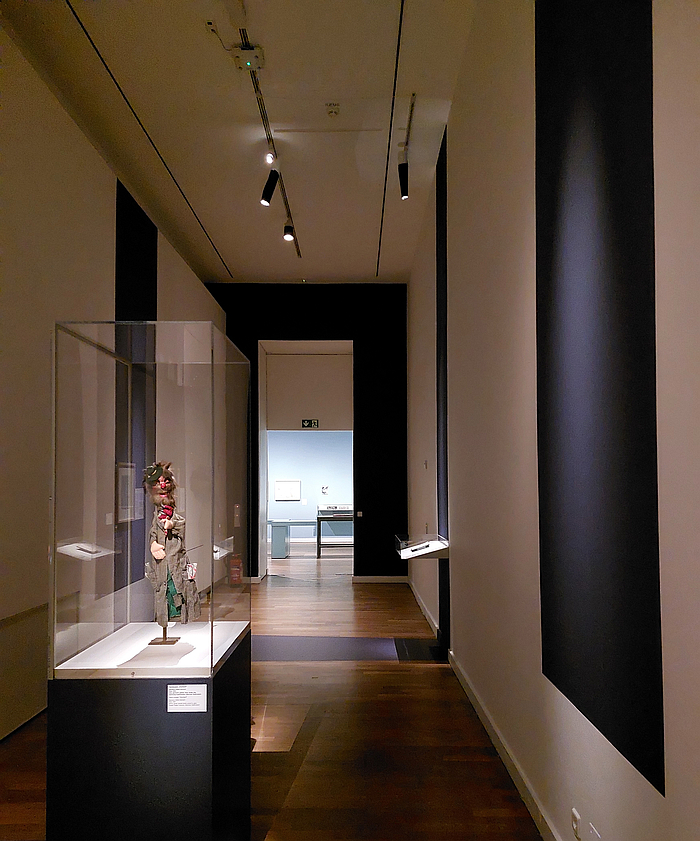
A chapter whose brightly light space allows one to approach it as an act of defiance, of a refusing to let yourself be stopped just because of Fascists and others who believe their world-view has a supremacy over your world-view that gives them a natural right to destroy you and your world. It doesn't. Never has, never will.
And a final chapter that exists as a series of questions such as, for example, How do my past experiences affect me today?, Do I want to live in Germany?, How can I make ends meet?, or How am I Jewish?, the latter including by way of a possible answer a Matzah cover, an object employed in the Seder feast held at the beginning of Passover, realised in 1959 by Anni Albers whose inclusion of metallic cellophane reminds of the cellophane containing acoustic and light reflecting/optimising 'Silberstoff', 'Silver Material' Albers developed as her Diploma project at Bauahus Dessau and which was used in the curtains for the aula of the ADGB school in Bernau. A reminder of a previous life. And of the continuity of existence.
While the question What design style fits my new environment? is, at least partly, answered by examples of works Margarete Heymann-Loebenstein, now, following her second marriage, officially Margarete Marks, realised in the late 1930 for the Greta Pottery brand she established in her new home in England. Works that while, as previously opined, arguably, represent a return to the works she was realising in the early 1920s before discovering her voice in Marwitz, for us, and while having nothing against them, there something a little safe about them, something a little conformist, for us they are missing the uncompromising doing your own thing and knowing why you're doing it, the defiance, of her Marwitz work, and thus Greta Pottery works that, for us, tend to stand as a shining admonishment to always defy, to never conform, never acquiesce: the work you produce, your contribution to society, will be all the better for it.
As will society and its objects of daily use.
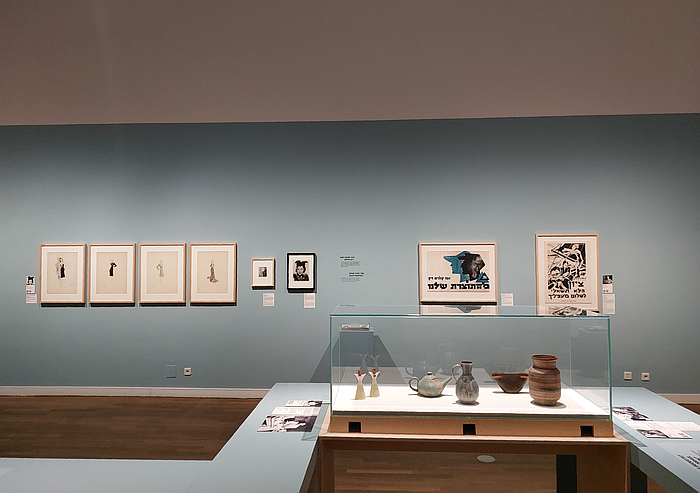
An easily accessible and neatly paced presentation whose narrative unfolds via an array of objects, sketches, photos, archive documents et al, Defiance's focus is very much the biographies of the selected creatives, the paths they took, the problems they encountered, the defiance they offered, rather than the works that thereby arose and that represent them in Defiance.
And while, yes, it is, without question, important, fundamental, that one is aware of and actively engages with the work of any and every creative, that one doesn't reduce them to a CV, in context of creatives active in decades long past that involves the creative having a contemporary visibility. And where that isn't the case, establishing that, re-establishing that, needs to be the priority. Whereby, no, not every creative, male or female, Jew or Gentile, is of equal importance in the (hi)story of design, some are, without question, more important that others. It's the nature of these, and all, things. But the narrative of design (hi)story, the narrative of social (hi)story, is as contributed to by all practitioners, and thus we need them all. Much as today we need all voices, all contributions, not just those of a narrow (longitudinal) section of society.
Defiance is a well-constructed, stimulating, invitation to begin to acquaint yourselves with creatives you never knew existed.
And an invitation to become acquainted afresh with an early 20th century you thought you knew. With early 20th century creativity you thought you knew. With a Modern Era you thought you knew.
An invitation that is easy to accept not least on account of the way Defiance offers a view of the early 20th century, of early 20th century creativity, that one normally doesn't have access to, that one is normally denied. A view that not only is without men, without steel tube furniture, without men, without -isms, without men, but for all that the context in which its narrative develops is the struggles of and the defiance of females in a period in which the promise of a more equitable place in society was being denied at ever more levels.
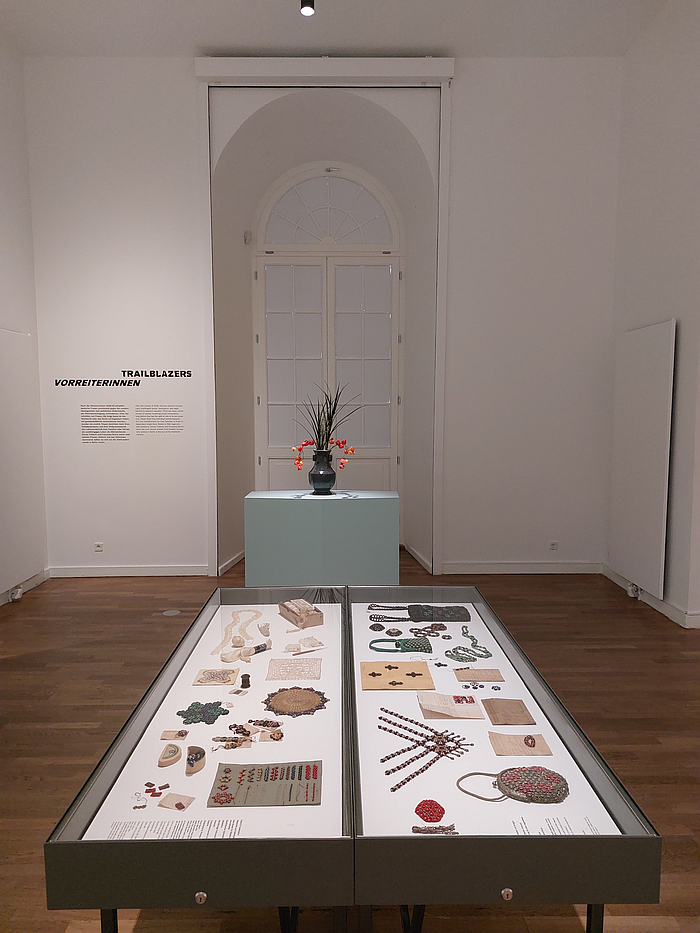
A focus on the struggles of, the defiance of, females whose narrative begins when that defiance was by all women; there is an argument to be made, we will make, that in Defiance's first half dozen chapters the featured creatives aren't discussed as the Jewish Women of the exhibition title, they are discussed as Women, the problems and challenges faced are discussed in context of the fact they are Women, the defiance they need to show is related to the fact they are Women, in a patriarchal society that refuses to yield. That they are also Jewish isn't hidden, is often very present, is often directly there before your eyes, you're aware is the reason they are being introduced, but isn't dominant in the discussion.
It's arguably no accident that the word 'Jewish', or any of its variations, doesn't appear in a chapter title until The Jewish Playroom, that moment just before 1933. A 1933 in which the Women of the narrative become the Jewish Women of the exhibition title.
A 1933 whose transition of Women to Jewish Women helps highlights how in the course of Defiance's timeline, and perhaps romanticising and generalising a little more than is prudent but is necessary at this juncture, a society that at the beginning of that timeline was relatively coherent in terms of the unity of different groupings, became divided, divisive, along cultural, racial, religious lines with all the problems that caused, and thus reminds of the consequences of a society based on hate, prejudice, discrimination, marginalisation, division and all the other things contemporary society seems determined to advance as components of a public discourse on national pride, and where that could, must, will, lead us if we don't change our ways. And thus of the need for defiance in the face of such a discourse.
A 1933 whose transition of Women to Jewish Women, or perhaps more accurately, developments in the course of Defiance's timeline on the path to 1933, that, arguably, influenced how the selected creatives viewed themselves and their relationship to wider society. A state of affairs perhaps, arguably, most accessibly illustrated on the one hand by the aforementioned increasing move towards an active fostering by German Jewish parents of an appreciation of Jewish identity within their children, to move associations with Judaism out of formal religious environment and into the nursery, and on the other in the person of Anni Albers, an individual whose Jewish ancestry is thoroughly invisible in her pre 1939-45 War biography, doesn't play a role, be that the biography as presented in Defiance or as popularly known. Becomes a theme after 1945, not just that way in which any and every biography of Albers notes her Jewish ancestry as being something relevant and important, but arguably also for Albers as illustrated by, and amongst other works, the aforementioned 1959 Matzah cover, a work that, we don't imagine, it would have occurred to her to produce 35 years earlier in the Weimar Weaving Workshop. And not on account of a, the, latent anti-Semitism at Bauhaus Weimar, but because her Jewish ancestry simply wasn't a thing. Then came 1933 and, one imagines, without ever having discussed it with Anni Albers, after 1945 came questions such as How do my past experiences affect me today? What does the land of Israel mean for me?, How am I Jewish? Novel questions demanding of an answer. And defiance.
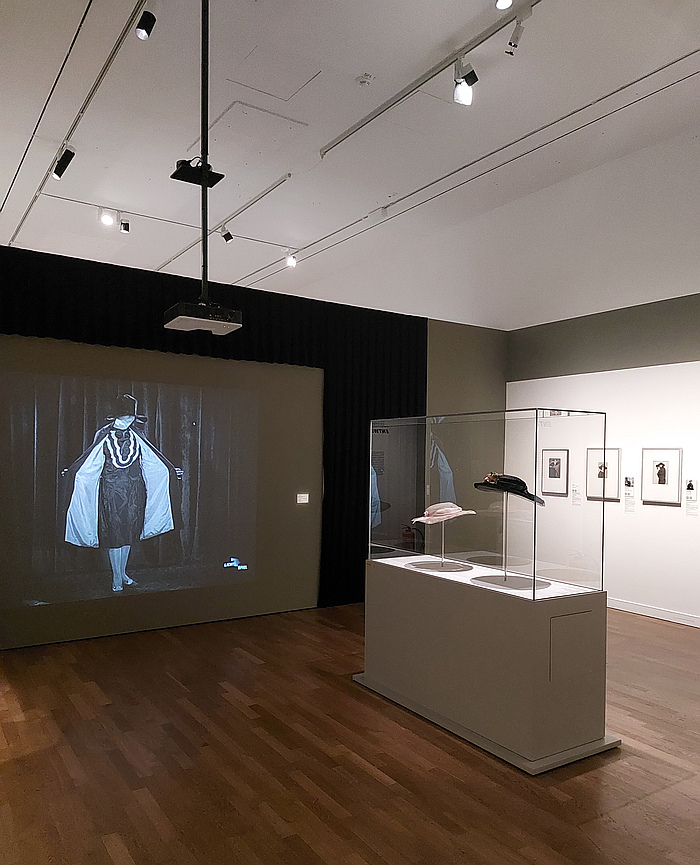
And a 1933 at which point the problems and challenges faced, and defiance needed, by the selected creatives becomes much, much greater. The need for their defiance becomes the fact they are Jewish and Women. A very nice reminder that prejudice and discrimination is often augmentative, that, as previously discussed by and from Regard! Art and Design by Women 1880–1940 at the Bröhan Museum, Berlin, multiple forms of prejudice and discrimination sum together to create a reality more challenging than the individual forms of prejudice and discrimination alone. And that in terms of (hi)story multiple forms of prejudice and discrimination limit your visibility to future generations more than single forms, cloak you looking backwards, remain a challenge long, long after your corporeal death. Thereby reinforcing a need for defiance to contemporaneous prejudice and discrimination today as urgent as it was a century ago.
Thus a presentation that not only allows access to an alternative narrative of the development of creativity and of European society in the course of the early decades of the 20th century that enables, empowers, differentiated appreciations of the (hi)story of that creativity and society, nor that only introduces a roster of creatives it is important you begin to become acquainted with by way of better appreciating the paths thus taken by European creativity and society, but that also allows one to better appreciate how the (hi)story of design in Europe came to be the popularly told, and unquestioned, blithely, re-told, narrative it is today, allows one to better appreciate why some creatives struggled to find their place on that narrative, how others who having established their place on that narrative became forgotten, and why that is important.
And thus allowing more nuanced reflections on contemporary design, on the narrative being formed today of contemporary design in publications, on social media, in product portfolios, in museum collections, in AI answers to questions of contemporary design, et al. Allows one to better reflect on who is writing that narrative, why they are writing that narrative, and how will that narrative be viewed and read by future generations. How will that narrative inform and instruct future generations.
And that thereby admonishes that we not only all defy the conditioned viewing of the (hi)story of design we are all popularly presented with today, a view Defiance elegantly questions and deconstructs, and insist on, demand, a more probable viewing, telling, of the (hi)story of design, but that also admonishes we all defy attempts to conventionalise the view on contemporary design down to a limited number of protagonists and perspectives, invariably those who are dominant and enjoy support amongst dominant groups, and insist on experiencing, being exposed to, engaging with, discoursing with, critcising, contemporary design, contemporary society, in all its diversity and variety free of the filters that skew and distort.
Defiance. Jewish Women and Design in the Modern Era is scheduled to run at the Jewish Museum Berlin, Lindenstr. 9–14, 10969 Berlin until Sunday November 23rd.
Further details, including the biographies of the selected creatives, can be found at www.jmberlin.de
